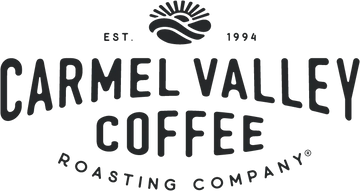
The Truth Behind Decaffeinated Coffee
The Deets on Decaf: How We Strip the Jitters from Your Joe at Carmel Valley Coffee Roasting Co.
At Carmel Valley Coffee Roasters, we believe in giving our decaf fans the full flavor experience minus the caffeine buzz, because sometimes you want to enjoy your coffee without turning into a jittery, hyper-caffeinated version of yourself. Here’s the scoop on how we decaffeinate our beans, keeping them as organic and pure as a Sunday morning snuggle session.

Swiss Water Process:
-
The Wizardry: Imagine your coffee beans taking a spa day in a hot tub of water. This bath not only relaxes them but also coaxes out the caffeine through osmosis, leaving behind all the good flavors. Then, like magic (or science, if you're being pedantic), the caffeine is filtered out, and the beans get a second dip in this now flavor-packed, caffeine-free water.
-
Why It Rocks: No chemicals, friends! Just pure, organic bean love. Your coffee stays as clean as a whistle, or as clean as coffee can get, anyway.
-
Location: Our beans take this luxurious trip up to Canada. It's like they're on a little vacation, minus the passport.
Mountain Water Process:
-
The Glacial Getaway: Here, we use water from Mexico's Pico de Orizaba, which is not just water but mineral-rich, glacier-fed water. It’s like the beans are getting a mineral facial while losing the caffeine.
-
Advantages: Again, no need for chemical exfoliants here. Just water doing its job, ensuring your coffee tastes like it should, not like it's been through a chemical factory.
Chemical Solvent Methods:
-
The Nasty Stuff: Now, let’s talk about the dark side of decaf – chemical solvents. Think of methylene chloride and ethyl acetate as the coffee world’s equivalent of those questionable beauty treatments that promise youth but might give you a third eye instead.
-
The Downside:
-
These chemicals are not just harsh on the environment; they might also be doing a number on your body. Methylene chloride? That's the villain in many a health scare story, with potential links to cancer and other fun things like liver damage.
-
Plus, they can tweak your coffee's taste, making it a shadow of its former self.
-
Regulatory Drama:
-
The FDA's January 2024 move to possibly ban methylene chloride from our food and drinks? It's like catching the bad guy after years of villainy. Better late than never, right?

Why Carmel Valley Coffee Chooses H2O Over Chemicals:
-
Health, Quality, and Flavor: We're all about that clean, organic life. By sticking to water methods, we keep our beans, and you, safe from chemical shenanigans.
-
Trust Factor: We're not just roasters; we’re your coffee guardians, ensuring every cup is as pure as our intentions, and have been doing so for 30 amazing years!!
The (De)caffeinated Conclusion:
Choosing how to decaffeinate coffee is like picking your battles. At Carmel Valley Coffee, we're in the fight for flavor, health, and the planet. So, when you sip on our decaf like Defogger® or Decaf Palo Colorado Espresso, know you're drinking coffee that's been treated with respect, care, and love.
For our friends that have one foot in and out the door of decaf, we’ve created Cloud Cover, an organic blend of 50% Defogger, and 50% Foglifter so you can turn the caffeine volume up or down just a bit, as you see fit!

Sources:
- Environmental Protection Agency: Methylene Chloride
- Center for Science in the Public Interest: EPA banned methylene chloride, but the FDA still allows its use in foods
- National Coffee Association: Get the facts on decaffeinated coffee
- BBC: How do you decaffeinate coffee
- NIH National Library of Medicine: Health effects of Methylene Chloride

